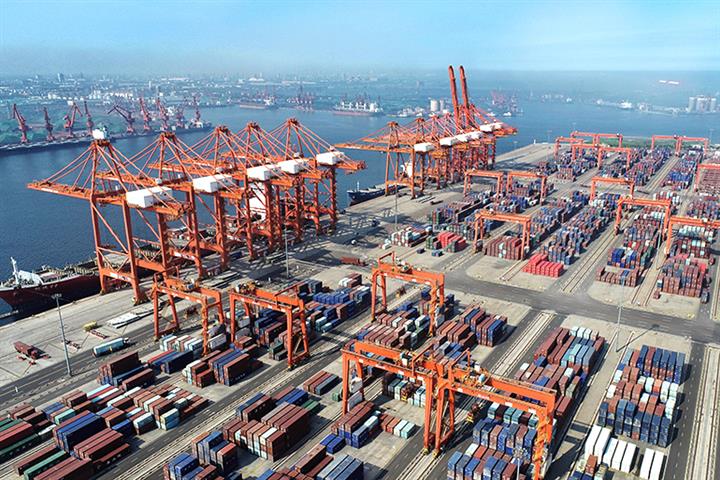 China Aims to Join Trans-Pacific Trade Pact to Lower Global Trade Barriers, Academic Says
China Aims to Join Trans-Pacific Trade Pact to Lower Global Trade Barriers, Academic Says(Yicai Global) Nov. 23 -- China’s recent application to join the Comprehensive and Progressive Agreement for Trans-Pacific Partnership is a sign that the country wishes to reduce international trade barriers, promote domestic reforms and spur economic development, an academic at Peking University said in an online forum today.
China’s accession to the CPTPP is generally in line with the country’s interests regarding development, although it faces some institutional obstacles, Wang Jisi, president of the university’s Institute of International and Strategic Studies, said at the China Finance 40 Forum.
The CPTPP, whose 11 member states account for 13.4 percent of the world’s gross domestic product, has set some of the highest standards for trade, investment, technologies, intellectual property rights and e-commerce in the world, which will not only provide a template for China’s economic reforms, but also a docking platform for the country’s further integration into industrial chains in the Asia-Pacific Region, said Wang, who is also a professor at the university’s School of International Studies.
By joining the CPTPP, China will be able to hedge against geopolitical divides and different ideologies in order to safeguard its rightful interests in the Asia-Pacific region through the economic and trade reciprocities negotiated between the pact’s signatories, Wang said.
However, China must first obtain the consent of all 11 member nations and there is still a gap between China’s current institutional system and the provisions in the CPTPP agreement. Therefore, joining the trade agreement will take some time.
US Trade Policy
The Biden administration’s trade policies are strongly constrained by domestic politics, Wang said. Biden has been trying to correct Donald Trump’s extreme policies since he took office. But the government has not yet gained a stable foothold and faces great pressure in Congress. It also dares not completely abandon the option of inflating tariffs, which is an instrument of trade protection.
There is considerable uncertainty about the Biden administration’s trade policy with China. US Trade Representative Katherine Tai said in October that the Biden administration will take a new, holistic and pragmatic approach to US-China trade relations. But she also noted that the US will work closely with its allies and like-minded partners towards building “truly fair” international trade that enables healthy competition and take all steps necessary to protect the US economy from damage inflicted through “unfair” competition.
US trade policy towards China will be affected by the struggles of political factions in the US and the considerations of geo-strategic competition, Wang said.
There has been some progress, though, regarding trade disputes between the US and Europe, he added. For instance, in March, the US and Europe reached an initial compromise regarding the pair’s dispute over civil aircraft subsidies which resulted in the US suspending tariffs on USD7.5 billion of EU imports and the EU lifting levies on USD4 billion of US imports.
The Biden administration intends to push European allies and the North Atlantic Treaty Organization to shift their strategic focus to the Asia-Pacific region. It regards the “Superpower Competition” between China and Russia as an important measure to unite Europe and NATO by “securitizing” and “politicizing” the economic and trade cooperation between China and Europe.
Editor: Kim Taylor